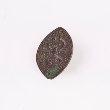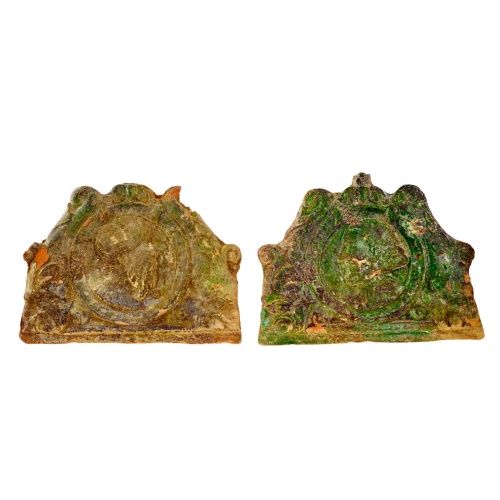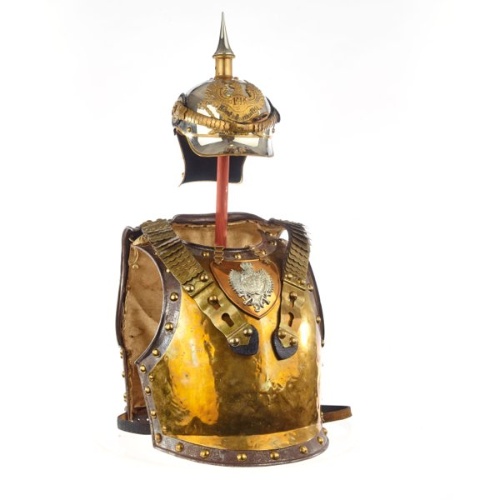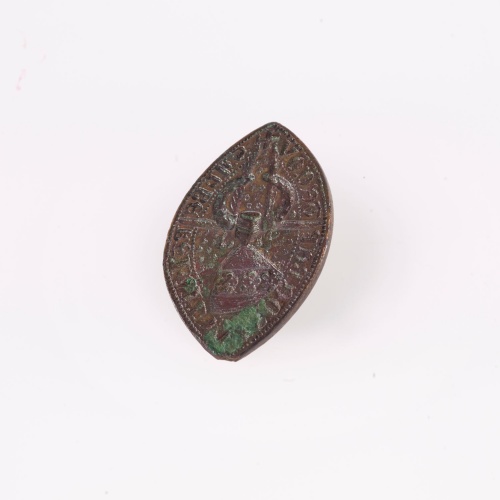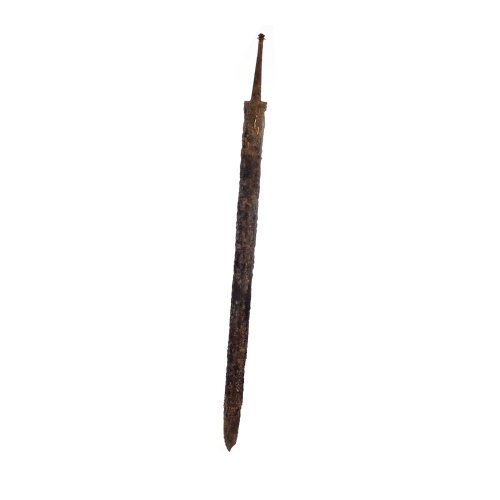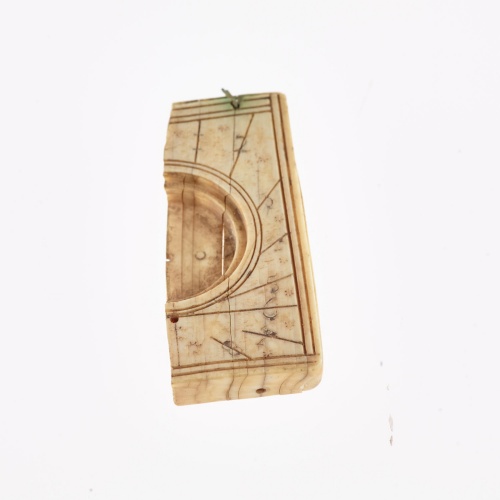Signet of Albert von Bertekow
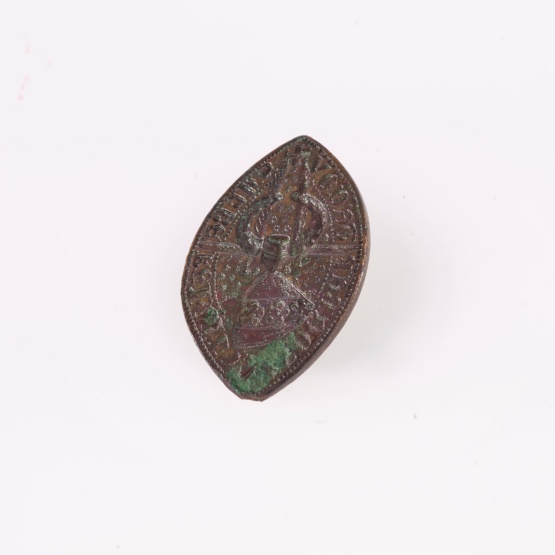
- brass, around 1300;
height: 5.7 cm
(on loan by the State Office for Culture and Heritage in Mecklenburg-Vorpommern) - Messing, um 1300,Höhe: 5,7cm
Leihgabe des Landesamts für Kultur und Denkmalpflege Mecklenburg-Vorpommern
Fashioned from brass, the pointed oval signet was discovered during refurbishment of the churchyard of St Mary's in a cellar filled with debris from a fire of the church stalls. Medieval signets are very rare finds. The size and form of the coat of arms depicted on the seal, also the shape of the heaume, place it stylistically in the period around 1300. Knights mainly used round or shield-like signets. But this one is pointed and oval, which suggests that its owner was related to a dignitary in the clergy. The signet displays an edge inscription in Gothic capitals: S[IGILLUM] ALBERTI MILITIS DE BERTECOV. This names the owner of the signet, while the emblem of the Bertekow family is shown in the centre. The serifs on the individual letters and the crucifix in the edge inscriptions are designed as small crosses. Inclined to the right, a triangular coat of arms with a bar and three roses arranged diagonally rightwards are prominently visible. Above this there is a front view of a heaume with an upright crest (flag/feathers) and buffalo horns. Small roses and stars adorn the space between the edge inscription and the coat of arms.
A connecting piece with an eyelet is fitted to the reverse to enable the signet's attachment to a chain or leather strap and to ensure that it can be carried by its owner. Sir Albert von Bertekow is born into an old line of noblemen from the village of Bertekow in the Altmark region to the north of Stendal. The Bertekows are mentioned as landowners in Märkisch and Pomeranian deeds as early as the 13th century. Sir Albert and his four brothers are first mentioned as scions on 17 December 1296. It is reasonable to assume that Albert von Bertekow was of fixed abode. But he may also have belonged to the standing knights bonded to the Pomeranian dukes, whom he will then have accompanied. The finding place in Pasewalk suggests that he had family ties there. It is not clear why the signet remained intact, as it was common practice for them to be rendered useless after the death of their owners.
Text: A. H.
